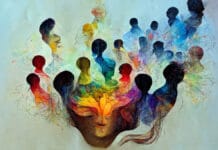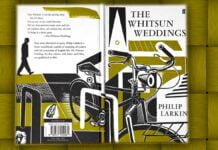Queer theatre is a powerful and transformative form of performance that explores themes of gender identity, sexuality, societal norms, and LGBTQ+ experiences. It challenges heteronormative narratives, disrupts traditional storytelling structures, and gives voice to those who have been historically marginalised. Through experimental and innovative theatrical forms, queer theatre has reshaped the cultural landscape by offering authentic representations of queer lives, celebrating diversity, and confronting oppression.
Rooted in activism, queer theatre emerged as a response to social, legal, and cultural marginalisation, particularly in the 20th century when LGBTQ+ individuals faced widespread discrimination. It is an artistic expression and a platform for resistance, education, and community-building. By addressing themes such as identity, love, oppression, and liberation, queer theatre continues to challenge dominant ideologies and expand conversations around gender and sexuality.
Historical Development of Queer Theatre
Queer themes have existed in theatre for centuries, though often in coded or disguised forms due to legal restrictions and societal taboos. In Shakespearean theatre, cross-dressing and gender fluidity were commonly explored, though not explicitly as queer identity. In the 19th and early 20th centuries, representations of LGBTQ+ characters were frequently stereotyped, ridiculed, or villainised, reflecting dominant societal prejudices.
The emergence of explicitly queer theatre occurred in the mid-20th century, particularly in the 1960s and 1970s, alongside the rise of the gay liberation movement. As LGBTQ+ activism gained momentum, playwrights began to create works that openly addressed queer identity, relationships, and struggles.
One of the earliest significant queer plays was Lillian Hellman’s The Children’s Hour (1934), which explored the devastating effects of homophobic accusations. However, due to strict censorship laws, queerness was often represented through subtext or tragic narratives, reinforcing the idea that queer existence was linked to suffering or punishment.
The Stonewall Riots of 1969 marked a turning point for LGBTQ+ rights, influencing theatre by encouraging more radical and unapologetic expressions of queerness. Harvey Fierstein’s Torch Song Trilogy (1982) and Larry Kramer’s The Normal Heart (1985) were pivotal in bringing gay identity and the AIDS crisis to mainstream theatre. These plays shifted the focus from tragic depictions of queerness to celebrations of love, defiance, and resilience.
The late 20th and early 21st centuries saw an explosion of diverse queer narratives, expanding beyond gay and lesbian identities to include bisexual, transgender, non-binary, and gender-fluid experiences. The works of playwrights such as Tony Kushner (Angels in America, 1991), Paula Vogel (Indecent, 2015), and Taylor Mac (Hir, 2014) pushed boundaries by blending politics, history, and experimental theatre forms, ensuring that queer theatre remained a vibrant and evolving art form.
Themes in Queer Theatre
Exploration of Identity and Fluidity
Queer theatre actively challenges the fixed notions of gender and sexuality, offering representations that embrace fluidity, ambiguity, and self-discovery. Many plays feature characters who resist societal labels, allowing for a more authentic and complex portrayal of queer experiences. The rejection of binary constructs (male/female, gay/straight) is a defining feature of queer storytelling, reflecting the diverse realities of LGBTQ+ lives.
Plays like Holly Hughes’s Clit Notes (1996) and Kate Bornstein’s Hidden: A Gender (1989) explore trans and non-binary identities, disrupting traditional narratives around gender roles. These works often incorporate autobiographical elements, performance art, and audience interaction to reflect the deeply personal and evolving nature of queer identity.
Resistance to Heteronormativity
Queer theatre is inherently political, as it challenges heteronormativity —the societal expectation that heterosexuality and cisgender identity are the norm. By presenting alternative ways of loving, living, and existing, queer theatre disrupts dominant narratives and exposes the systemic inequalities faced by LGBTQ+ individuals.
In Caryl Churchill’s Cloud Nine (1979), gender roles and colonial power structures are deconstructed through cross-casting, time shifts, and absurdist storytelling. The play forces audiences to reconsider how gender and sexuality are socially constructed, making the personal inherently political.
Representation of LGBTQ+ Love and Relationships
For much of history, queer love was either erased from mainstream theatre or depicted as forbidden, tragic, or deviant. Modern queer theatre seeks to reclaim these narratives by celebrating love, desire, and intimacy in all their forms. Plays like Terrence McNally’s Love! Valour! Compassion! (1994) and Jonathan Harvey’s Beautiful Thing (1993) present queer romance in a joyful and affirming manner, countering the historical narratives of queer suffering.
Queer theatre also explores the complexities of queer relationships, including issues such as polyamory, chosen families, and intergenerational connections. This broadens how love is defined, offering new possibilities for connection and community.
The Impact of HIV/AIDS on Queer Narratives
The HIV/AIDS crisis of the 1980s and 1990s had a profound impact on queer theatre, leading to works that mourned the loss of lives, exposed government negligence, and called for activism. Larry Kramer’s The Normal Heart (1985) is one of the most influential plays from this period, capturing the anger, grief, and urgency of the AIDS epidemic. Tony Kushner’s Angels in America (1991) also tackled the AIDS crisis but expanded its scope to explore American politics, spirituality, and historical memory. These works ensured the crisis would not be forgotten and provided a collective space for mourning, healing, and activism.
Queer Futurism and Utopian Possibilities
While early queer theatre often centred around struggle and oppression, contemporary queer theatre also imagines new, utopian possibilities for queer existence. Many modern queer playwrights explore what a queer future might look like, moving beyond resistance to envision radical joy, liberation, and transformation.
Plays such as Taylor Mac’s A 24-Decade History of Popular Music (2016) reimagine history through a queer lens, blending drag, cabaret, and interactive theatre to celebrate resilience and community. Other works, like Philip Dawkins’s The Homosexuals (2011), depict queer characters who are not defined by trauma but by love, ambition, and the complexities of daily life.
Impact and Legacy of Queer Theatre
Queer theatre has played a critical role in shaping cultural discourse, influencing mainstream media, and expanding public understanding of LGBTQ+ lives. Broadway productions such as Rent (1996) and Fun Home (2013) brought queer narratives to larger audiences, while independent queer theatre companies continue to create experimental and subversive performances.
Beyond entertainment, queer theatre functions as a form of activism, community-building, and historical documentation. It has given voice to marginalised individuals, provided safe spaces for expression, and pushed the boundaries of artistic innovation.
Queer theatre is a bold and ever-evolving form of performance that challenges norms, celebrates diversity, and reclaims LGBTQ+ histories. Its exploration of identity, love, resistance, and futurism continues to be a powerful force for change, representation, and artistic revolution. As queer identities and experiences evolve, so too does queer theatre, ensuring its place as a transformative and necessary part of the theatrical landscape.






























